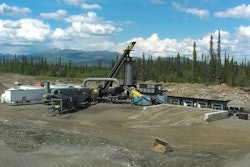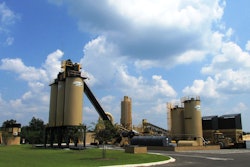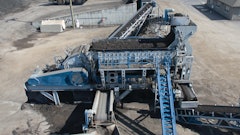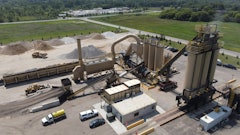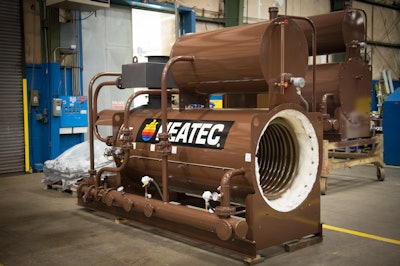
The importance of good flow of hot oil in a hot oil heating system is often overlooked at hot-mix asphalt (HMA) plants. But good flow is essential to high heating efficiency and long life of the heater and oil.
KNOW THE SYSTEM
Many service technicians often discover inadequate flow at plants they visit. Such plants are likely to have poor heating efficiency. The heater and hot oil are also apt to have a short life. The remedy starts with learning how the system works and what causes the problem.
Consider a hot oil system heated by a fired-heater. Most HMA plants use such a system to heat asphalt storage tanks and other components. The oil (also known as thermal fluid) is heated as it circulates through the heating coil of the heater. The coil is heated by hot gases from a burner that is fired either by natural gas or fuel oil. The amount of heat imparted to tanks and other heated components depends on how hot the oil gets and its rate of flow as it circulates through the coil. Restrictions in the system can reduce the rate of flow. Abnormally low flow rates can allow the coil to be overheated and damaged, causing oil to break down prematurely.
MEASURING FLOW RATE
If there was a simple, easy way to measure the flow rate of hot oil circulating through the coil, the heater could automatically shut off if adequate flow were lacking. Unfortunately, devices to measure flow rates directly are not well suited to hot oil systems. That’s why an indirect method is used that relies on pressure measurements.
Pressure is measured at the inlet to the coil and at the outlet of the coil. The difference in these two measurements is known as differential pressure (DP) and is an indirect method of measuring flow rate. Thus, a switch that reacts to DP is used on all many hot oil heaters. The switch is preset to allow the burner to operate as long as the differential pressures sensed by the switch remain within limits. The limits are established by engineers for each heater model.
DIFFERENTIAL PRESSURE
You may be wondering what problems or conditions cause inadequate flow and what effect they have on differential pressure. Figure one includes a list of problems and their effects on differential pressure. The illustration depicts a thermal fluid circuit with a heater coil. Please note that one of the problems listed is restricted piping. A clogged hot oil strainer and restrictions in hot oil piping are the most common causes of low flow.
Piping restrictions are often caused by undersized hot oil jumpers used at pipe joints on heated asphalt piping. Many plants use ¾-in. jumpers, which are much too small. Many manufacturers strongly recommend use of 1½-in. jumpers. A 1½-in. jumper increases flow about three-to-five times more than a ¾-in. jumper.
Not only do undersized jumpers reduce flow, they also cause unusually long heat-up times at a cold startup. Because of this, many plant operators avoid shutting off their heating systems overnight for fear of delaying production the next morning, while waiting for asphalt lines to heat up. Consequently, they miss fuel savings from shutting off the system overnight. Unfortunately, larger jumpers are not easily retrofitted to existing systems.
ENSURE ADEQUATE FLOW
So, no matter whether your hot oil heating is old or still in the planning stages, you should do all you can to ensure adequate flow. It really pays to consider flow—right from the start, before construction begins. But the quest never ends. You must always be alert to maintain operating conditions that ensure good flow.
You should also consider the important advantages of using a multi-line heater system, instead of a single-line hot oil system. Multi-line heaters significantly improve flow through all components, including the heater coil.
If you're ever in doubt, reach out to your heater manufacturer.





